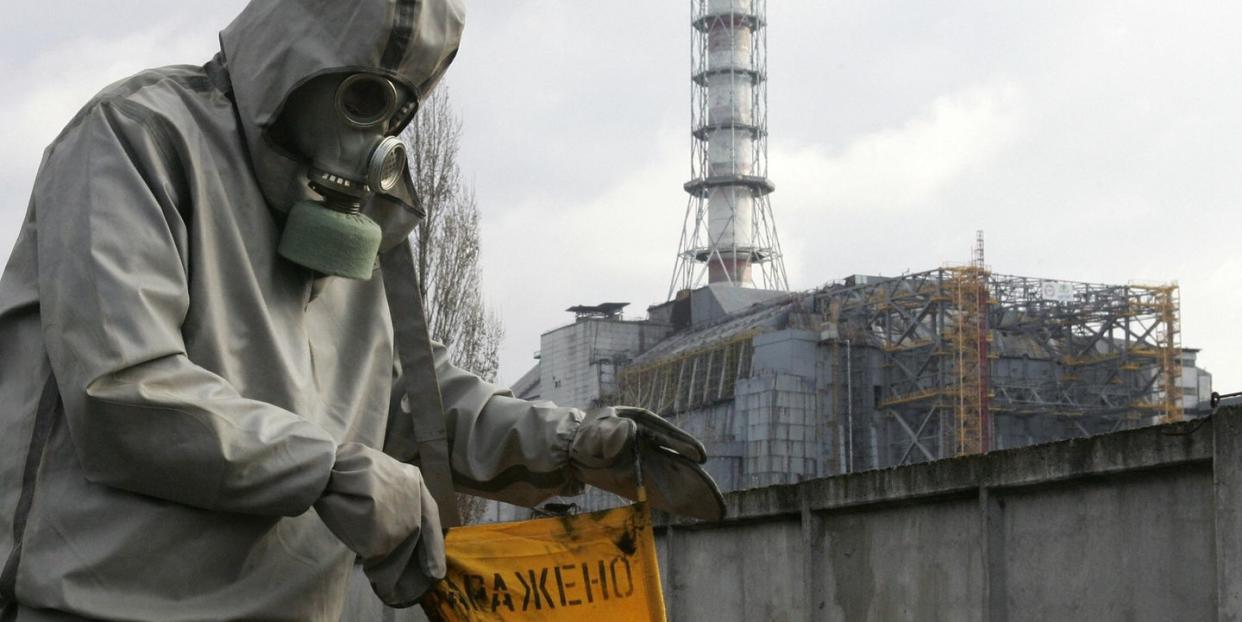You Should Know About This Chernobyl Fungus That Eats Radiation

A fungus observed inside Chernobyl is a radiation extremophile that could inspire new technology.
Removing radiation and even turning it into energy could help clean disaster sites and enable spaceflight.
The fungi use high amounts of melanin to both resist radiation and turn it into energy.
Scientists have discovered that a longtime fungal resident of the Chernobyl complex could actually “eat” radiation. In an upcoming paper, scientists will share the results of growing the fungus on the International Space Station.
Scientists have known about this fungus, and similar extremophile organisms that can thrive on radiation, since at least 2007. The variety found in Chernobyl “can decompose radioactive material such as the hot graphite in the remains of the Chernobyl reactor,” Nature said in 2007. The fungus grows toward the hottest and most radioactive places, like phototropism but for deadly toxins.
How can this fungus process radiation in this way? Because it has tons of very dark melanin pigment that absorbs radiation and processes it in a harmless way to produce energy. Scientists believe this mechanism could be used to make biomimicking substances that both block radiation from penetrating and turn it into a renewable energy source.
Chernobyl is a special case where extreme ambient radiation is a huge danger to anyone who enters, and having a “radiation blocker” to treat protective suits or even the entire inside of the plant to reduce ambient radiation could be a huge boon. Besides reducing danger, though, the world is filled with machinery and devices that safely use radiation, from medicine to manufacturing. Even low levels of contained radiation could be used to make energy that could reduce the energy burden of those devices.
Kasthuri Venkateswaran, a NASA biotechnologists with over 40 years of research experience, has helmed NASA’s research on the radiation extremophile fungus. His publications from over the years include dozens of papers about organisms aboard the International Space Station (ISS), and that’s where he plans to take the radiation-eating fungus next.
The ambient radiation aboard the space station is low compared to other parts of space, but it’s high compared to the Earth’s surface. Growing the fungus there could reveal new sides of its nature, and may confirm that the fungus can still absorb and process radiation in the much more immersed environment of space. This has great potential for future space travel, where deadly amounts of cosmic radiation are one of the big obstacles scientists must navigate in order to safely send people into outer space.
It’s not just fungus that eats radiation in this way. The overall family of extremophiles that live on or despite radiation includes both fungi and bacteria, and different species have different mechanisms for absorbing or tolerating radiation. The NIH explains, “[S]ome populations of microorganisms thrive under different types of radiation due to defensive mechanisms provided by primary and secondary metabolic products, i.e., extremolytes and extremozymes.”
Each different metabolic product has potential uses in medicine, safety, and manufacturing. Indeed, the general ability of these organisms to thrive in conditions where most organisms break down, mutate, or develop cancers warrants further study across a variety of disciplines.
You Might Also Like

